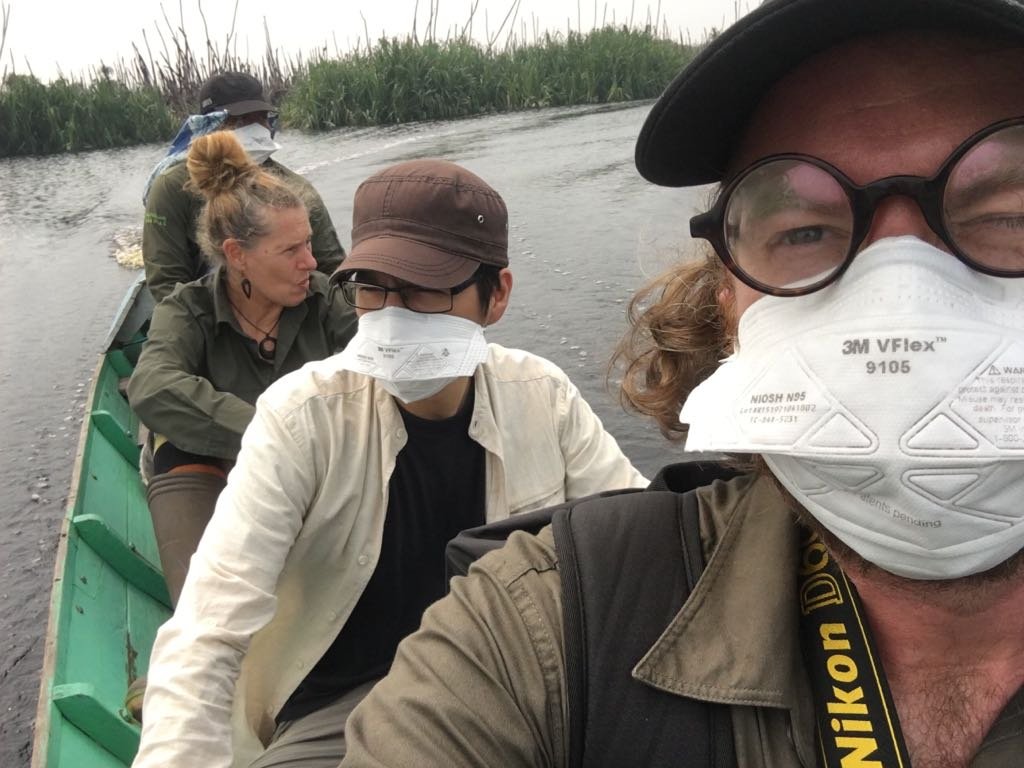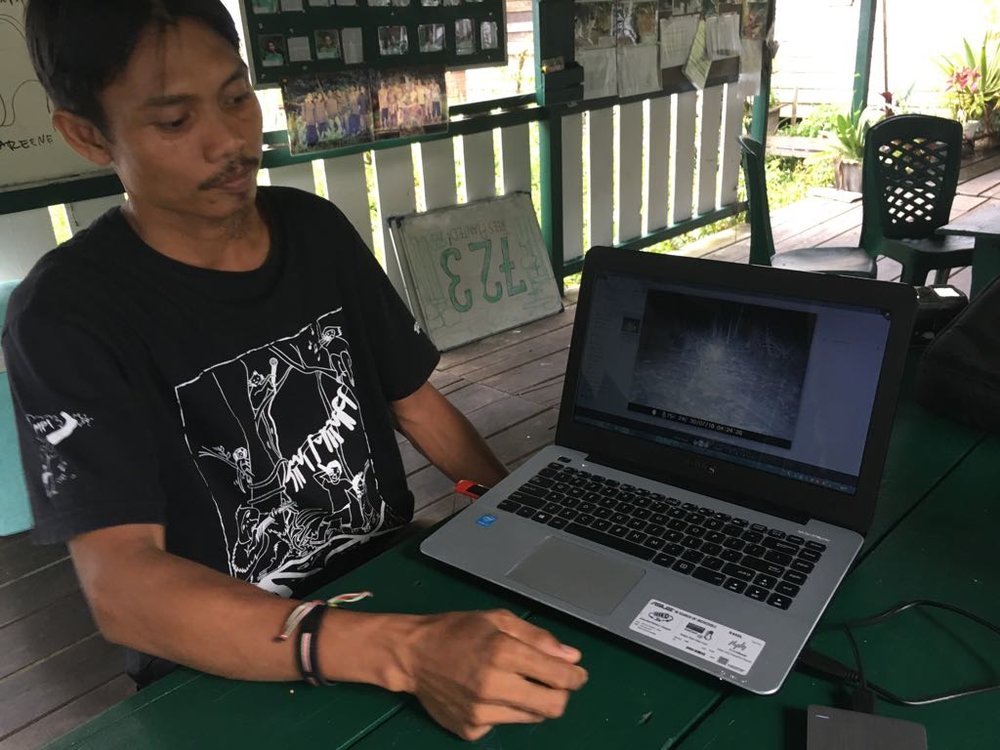Notes from our Research trip to Borneo
What are a game developer and a data scientist doing together in a Bornean rainforest, you might wonder? In the past year and a half, we have been working towards a full Augmented Reality location-based game to support conservation, getting the financing, our team, and conservation partnerships in place. The first installment of the game will feature apes, and how can we create a game about their everyday lives and what it takes to conserve their habitats, without having experienced it ourselves?
So at the end of 2018, IoE’s Jake and Raff, our head of product and data scientist respectively, packed their bags and headed to the Sebangau forest in Borneo. They visited the Borneo Nature Foundation, an organization working to protect the unique Bornean peat-swamp forests that are home to orangutans and gibbons. Their research subjects, Fio, a male orangutan, and Chili, a male gibbon, will be the main characters in the game.
Field visits are crucial for our game development
The best conservation efforts are based on evidence, and similarly, we want to use the expertise of researchers and our own experiences on the ground to accurately portray the complex stories of the different animals and the process of protecting them.
We are incredibly lucky in finding conservation partners like the Borneo Nature Foundation. Their team was incredibly welcoming and took the time to host us, take us around, and answer dozens of our questions.
We need to have a deep understanding of the wildlife we feature, and what it takes to protect them, in order to develop rich gameplay and narrative that is as truthful as it is entertaining. Without seeing the conservation work in person, this richness would be impossible to achieve.
We will of course be replicating Fio and Chili as 3d digital characters, so we need to understand what she looks like in various states (sitting, walking, eating, sleeping), what her habitat looks like, and we need to understand the research data that we will base her behavior and movements on.
We also needed to understand the inside story of what it takes to study and protect these amazing animals. We tracked the orang-utans and gibbons on foot through the forest and spoke to Dr. Helen Morrogh Bernard, who began her research in the Sebangau Forest in 1995, and knows the place inside and out.
IoE's Jake and Raff with Karen and Idrus from BNF, enroute to the research station in the Sebangau forest.
Here are some snippets that popped out from the pages and pages of notes that Jake and Raff took while speaking to the team and tracking the animals on foot through the forest.
Some of the things we learned in Sebangau
While tracking Chili the gibbon, it was actually not the ape they were on the lookout for, but the movement of the branches in the canopy. Interesting insight for the design team!
Animal movement data is crucial for conservation research, but GPS data is not always very accurate under the trees in a forest, and therefore hand-drawn tracks on a trail map can be more reliable. Dr. Morrogh Bernard used to estimate the location of the orang-utan she was tracking using a compass and tape, and draw tracks by hand on a map of the field station’s trail system. Over time, GPS units have become smaller and more accurate, replacing the need to draw tracks by hand.
The animals that BNF tracks are first habituated, because animals that are not used to the presence of observers would not behave naturally, rendering the data useless. Each individual orangutan takes a different time to habituate. Some take 1 or 2 weeks Some individuals take 6 or 7 years. Theresa is still not fully habituated. Frankie too - he learned to chase field workers. Our Fio has been followed since he was a baby, so he is very comfortable in the presence of the researchers.
Illegal logging, a huge threat to the habitat, was happening on a huge scale in the Sebangau forest, and its canals were used to float the logs out. The best way to protect the forest is with presence, and research camps are very important for that - the presence stops people from coming in. One could say that the best form of protection from illegal logging is research camps.
Hendri from BNF explains how the different species used in restoration efforts, are collected and looked after in the nursery.
Maintaining structures for the workspace and to house staff is hard, as everything rots in the forest. Staff to support these structures and the team is also hard to get funded. There are no grants available for that part of the work. Yet, the team needs to eat, sleep, work somewhere, and the structures and staff are needed to make the other conservation work possible.
When Fio was with his mum Feb, she would’ve met up with other mums, and Fio would’ve played with their kids. The mums wouldn’t have interacted much, but the kids would have. During adolescence, he would have met up with other adolescents, and other adolescents would have met up with Feb to come and play with Fio. So when he eventually left his mum, he had already met up with lots of individuals, and he knows them all like we know people.
The replacement rate of orangutans is low: it takes a long time for a mother to raise her baby before she can have another one. Orangutans only have a few offspring in their lifetime because the babies have to learn so much: distribution of foods, the fruiting cycles, mapping the habitat... If things go well for Fio he will get bolder and start exploring further, but he probably won’t leave his home range until he’s about 12.
Nobody will protect a place unless you can prove there’s stuff living there that’s worth protecting. So you go in, do the research, get the data, and present the findings. The first thing the conservationists do is a biodiversity survey - they look at indicator species such as dragonflies and butterflies, as well as primates. Everyone loves orang utans - so by attracting attention to protect them, you’re actually protecting the entire forest.
Local scientists are role models - young people think: ‘that could be me’.
The conservationists use several camps, closer and further from the base. Camp experiences get more ‘feral’ as you go further. Expeditions to Sebangau are very easy, the next camp is a challenge, and the next furthest requires total commitment, and emotional ability.
Adul from BNF showing images from the camera traps in the forest.
We could use purchases in the game to fund camera traps - each one costs less than USD $200. Players could for instance get pictures from the one they funded- a fun way to keep people engaged with the work at BNF beyond the game.
These are just some of the amazing insights we got from visiting the Borneo Nature Foundation team. Do you want to stay up to date on our game development? Sign up for our newsletter! Follow the amazing work of BNF on twitter and instagram.
NEXT DESTINATION: THE CONGO
This spring, Gautam and Raff will be going to the Republic of the Congo to learn more about the gorillas that we will feature in the game.


